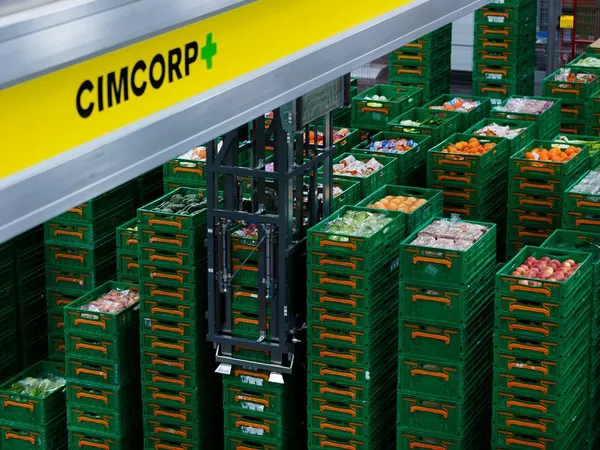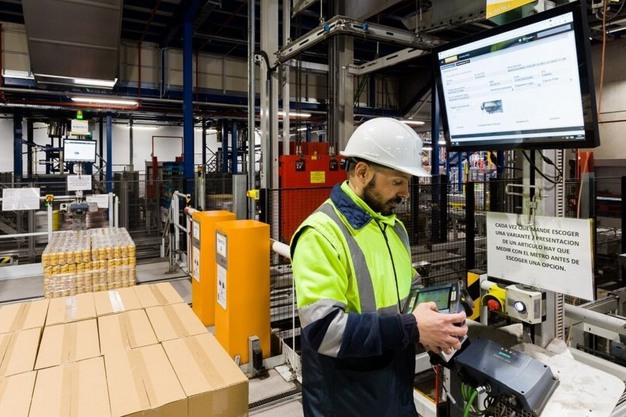Most traditional warehouses require employees to manually lift and carry crates of goods that are often heavy. Repetitive twisting, turning and reaching places warehouse staff at constant risk of injury, which potentially leads to long-term physical harm. Particularly in times of labour shortage, manual order fulfilment results in warehouse staff having to work harder and faster, increasing their risk of workplace injury. By eliminating these ergonomic hazards, automation marks a transition from the traditional, physically demanding warehouse to more modern facilities that run better, faster and safer operations.

Crates of fresh produce being handled by robots
Healthy workplace means productive workforce
Ergonomics is not just a buzzword. In fact, employee well-being and safety are some of the top reasons behind the decision to automate distribution centers, together with greater reliability in distribution. A safer workplace leads to healthier workers, lower injury costs, less stress and higher employee retention.
"Crates handled manually are often heavy," explains Kari Miikkulainen, Director of Warehouse and Distribution Industry Sales at Cimcorp. "In grocery distribution, for example, workers may be lifting crates of fruit and vegetables weighing over 25 kilos. Trucks are often loaded up to two meters high, and to pick up heavy crates from this height is very strenuous for the human body, not to mention the possible safety issues."
Kari Miikkulainen, Director of Warehouse and Distribution Industry Sales at Cimcorp
In addition to the ergonomic challenges, insufficient staffing increases the operating pressures that beset manual distribution. Investing in workplace safety is vital to ensure the well-being of workers and stay competitive. Work hours lost to avoidable injuries hamper the productivity and efficiency of the warehouse.
Automation enhances operations and safety
Automation creates a safer workplace by taking high-risk tasks away from workers and also provides an opportunity to consolidate the entire distribution center through system integration. From conveyors and automated guided vehicles (AGVs), to automated storage and retrieval systems (AS/RS) and order picking solutions, robotics and machinery can alleviate the demanding task of order fulfillment. These automated solutions can provide rapid and accurate movement of goods – from receiving through storage, replenishment and picking, to packing and shipping – optimizing material flow from end to end. With the help of automation, warehouses and distribution centers can eliminate the risks of injury, minimize employee strain due to absences and provide better job satisfaction.
 Automation elevates workers into supervisory roles
Automation elevates workers into supervisory roles
"Automation can alleviate the physical burden for workers and elevate them into new, technical and supervisory roles. In effect, automated systems not only fill the operational gaps left by widespread labour shortages, but also protect current employees with more fulfilling, tech-driven positions. Thus, automation can present a drastic improvement in ergonomic conditions and the future outlook of distribution centers," says Kari Miikkulainen.
For more information:
Maarit Leppäaho
Cimcorp
Tel: +358 10 2772 000
www.cimcorp.com
